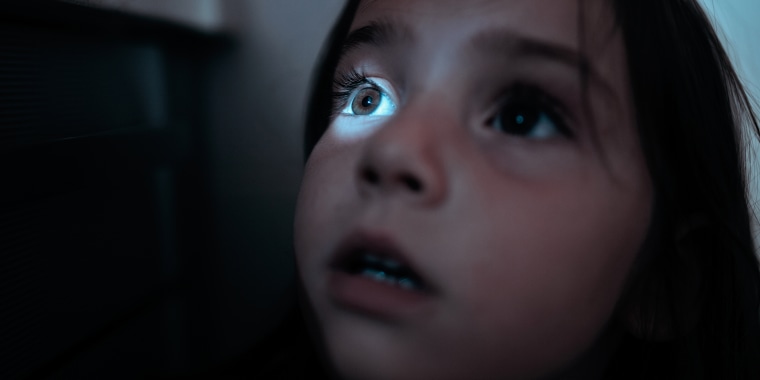A new study out of Wuhan, China, where the novel coronavirus was first detected last year, indicates that some children infected with COVID-19 may show eye symptoms.
In recent weeks, pediatric coronavirus cases have increased across the country. While most children do not experience serious health consequences, the coronavirus is also linked to multisystem inflammatory syndrome in children (MIS-C), a rare but serious condition that tends to appear several weeks after a child recovers from COVID-19.
The recent study, which was published in the medical journal JAMA Ophthalmology on August 26, examined 216 children between the ages of 2 and 11 years old. All children had tested positive for COVID-19, and while many symptomatic patients had common coronavirus symptoms like fevers and coughs, 49 (22.7%) of the children studied showed "various ocular manifestations." Similar symptoms have also been seen in adults.
The study found that the most common eye symptom was conjunctival discharge, which was seen in more than half of the children with eye symptoms. Children who had other symptoms, like a cough, were more likely to show ocular symptoms, such as conjunctivitis, also known as pink eye.
Dr. Neil Bressler, an ophthalmologist based in Baltimore, Maryland and the editor of JAMA Ophthalmology, said that he believed the study to be "clinically relevant" and could help with diagnosing the virus in children.
"(The study) tells us as ophthalmologists that, if you're seeing children and they have pink eye or other signs of conjunctivitis ... that could be a sign of COVID-19," he said.
However, Bressler noted that a case of pink eye wasn't necessarily a guarantee that a child had the novel coronavirus, since just over 22% of the children in the study showed similar symptoms.
"It's not to the level of 'We need to change the policy and check all children (for pink eye),' but it's important that people realize that this is important," Bressler said. "It doesn't necessarily mean that every child that walks in with conjunctivitis should be getting tested for COVID-19."
He said that on their own, eye symptoms were likely not a sign of the virus, but if a parent knew their child had been exposed to the virus, or if they had shown other symptoms, such as a fever or cough, it could be good to get them tested.
Dr. Sonal Tuli, an ophthalmologist based in Gainesville, Florida and a clinical spokesperson for the American Academy of Ophthalmology, cautioned that even though the eye symptoms may not be coronavirus-related, parents should still keep children who are displaying signs of conjunctivitis home from school or other activities.
"Pink eye that looks like COVID just looks like pink eye, there’s no way to distinguish it from pink eye that comes from anything else," Tuli said. "Pink eye by itself is very infectious too, so those children should be kept home. Kids will touch their eyes, touch the toys, put it in their mouths, and other children could touch those toys, then touch their eyes ... That’s how pink eye spreads through daycare centers and schools."
Tuli agreed with Bressler that since children get pink eye very frequently, that alone may not mean you should get a child tested for COVID-19.
"A lot of upper respiratory tract infections, including the cold and flu, can cause pink eye. The eyes and nose are infected, and things that inflame one can irritate the other," she said.
Bressler said that unfortunately, there is no way to distinguish coronavirus-related pink eye from normal pink eye.
In some cases, coronavirus can be contracted through the eyes, which can be prevented by avoiding touching the face. Some experts have recommended wearing goggles or other protective eyewear, but both Tuli and Bressler said that that was likely unnecessary in day-to-day life.
"If someone sneezed right into your eyes, the goggles would protect you, but usually if someone's going to sneeze or cough, we move away. I don't think that right now, at least for people walking around, you don't have to wear goggles," Bressler said.


